Introduction
Electric vehicle (EV) is one that operates on an electric motor, instead of an internal-combustion engine that generates power by burning a mix of fuel and gases.
Electric Vehicles (EV’s) include, road and rail vehicles, surface and underwater vessels, electric aircraft and electric spacecraft.
Though the concept of electric vehicles has been around for a long time, it has drawn a considerable amount of interest in the past decade amid a rising carbon footprint and other environmental imp…
An electric vehicle may be powered through a collector system by electricity.
1. The Concept of Electric Vehicles
Electric vehicle refers to a vehicle that is powered by on-board power supply and driven by a motor, and meets the requirements of road traffic and safety regulations
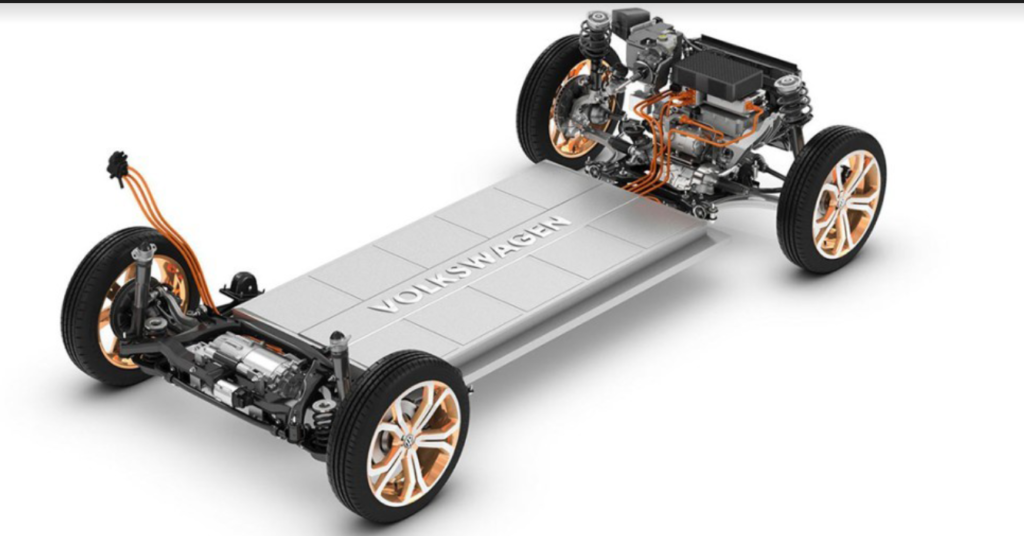
The advantage of electric vehicles is that they do not emit harmful gases that pollute the atmosphere. Even if the power consumption is converted to power plant emissions, other pollutants except sulfur and particulates are significantly reduced.
Since most of the power plants are built far away from densely populated cities, they do less harm to human beings, and because the power plants are stationary and emit concentrated emissions, it is easier to remove various harmful emissions, and related technologies are already available.
Since electricity can be obtained from a variety of primary energy sources, such as coal, nuclear energy, water power, wind power, etc., people’s worries about the depletion of oil resources are relieved.
Electric vehicles can also make full use of the surplus electricity when the electricity consumption is low at night, so that the power generation equipment can be fully utilized day and night, greatly improving its economic benefits.

Relevant studies have shown that the same crude oil is crudely refined, sent to power plants to generate electricity, charged into batteries, and then driven by batteries, the energy utilization efficiency is higher than that after refining into gasoline, and then driving vehicles through gasoline engines, so it is conducive to saving energy. It is these advantages that make the research and application of electric vehicles a “hot spot” in the automotive industry.
2. Structure of an Electric Vehicle
The composition of electric vehicles includes: Electric drive and control system, mechanical systems such as driving force transmission, and working devices to complete predetermined tasks.
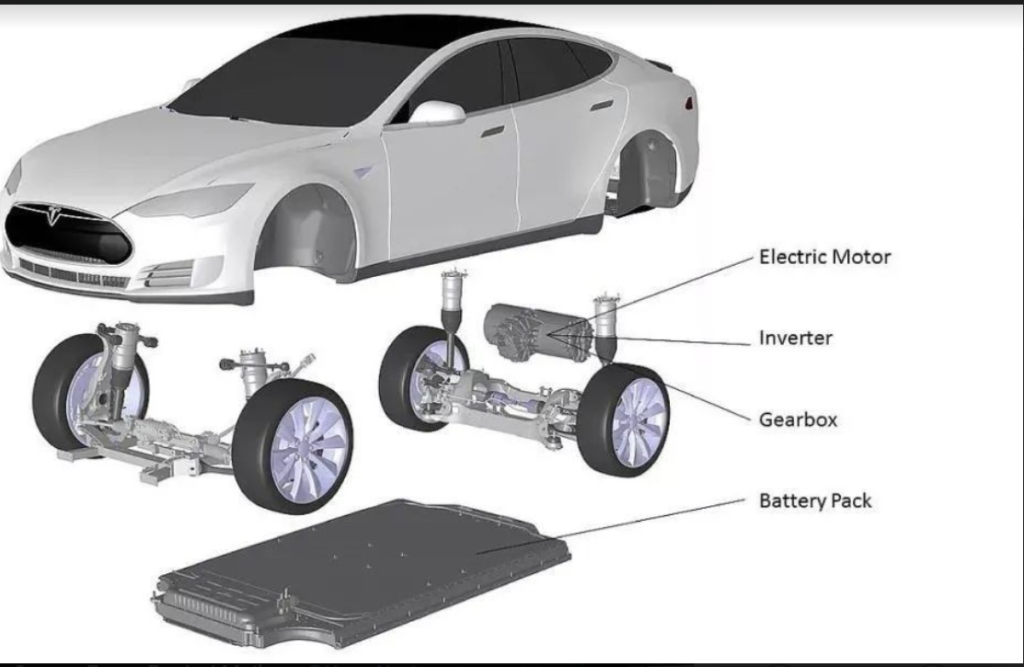
The electric drive and control system is the core of electric vehicles, and it is also the biggest difference from internal combustion engine vehicles. The electric drive and control system consists of a drive motor, a power supply, and a speed control device for the motor. The rest of the electric car is basically the same as the internal combustion engine car.
2.1 Power Battery
The power battery provides electric energy for the driving motor of the electric vehicle, and the electric motor converts the electric energy of the power source into mechanical energy, and drives the wheels and working devices through the transmission device or directly.
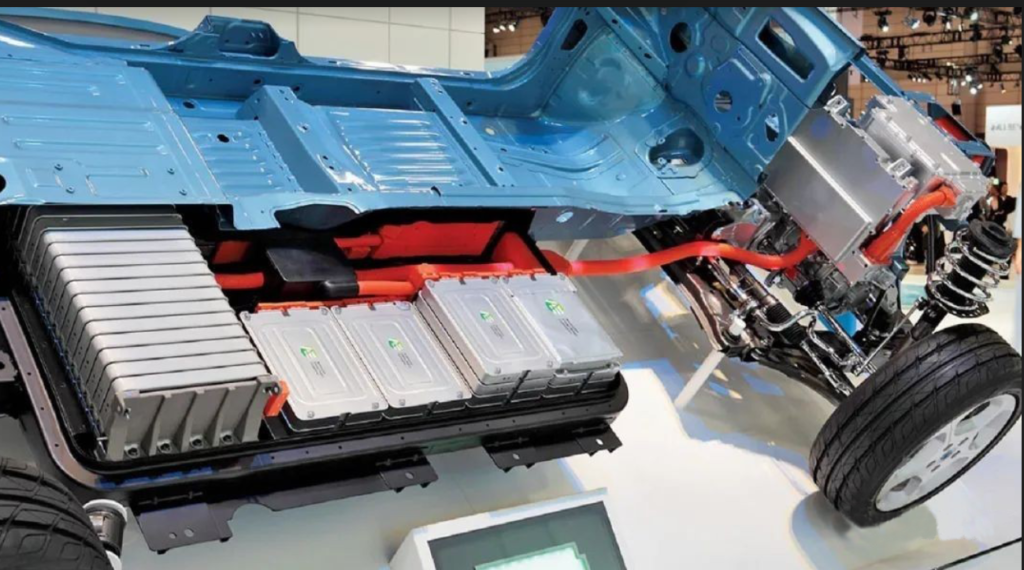
In the past, the most widely used power source for electric vehicles was lead-acid batteries, but with the development of electric vehicle technology, lead-acid batteries are gradually replaced by other batteries due to their low specific energy, slow charging speed, and short lifespan.
In addition to the mainstream lithium batteries, the developing power sources mainly include sodium-sulfur batteries, nickel-chromium batteries, fuel cells, flywheel batteries, etc. The application of these new power sources has opened up broad prospects for the development of electric vehicles.
2.2 Drive the Motor
The function of the drive motor is to convert the electrical energy of the power source into mechanical energy, through a transmission or a working device that directly drives the wheels. Historically, electric vehicles have widely used DC series motors, which are very consistent with the driving characteristics of vehicles. However, due to the existence of commutation sparks, the DC motor has low specific power, low efficiency, and large maintenance workload.
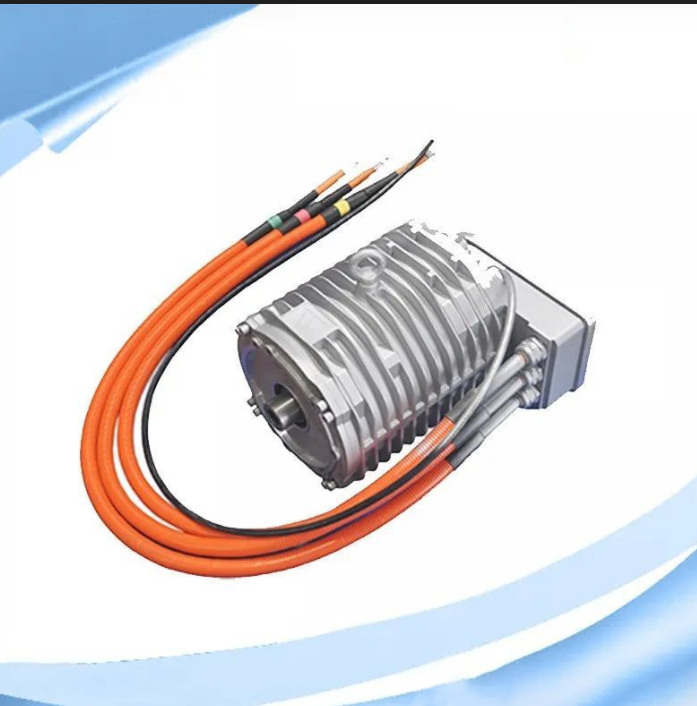
At present, the motors used in pure electric vehicles can be divided into two categories: permanent magnet synchronous motors and AC asynchronous motors. Self-owned brand electric vehicles basically use permanent magnet synchronous motors, while Tesla and Weilai use permanent magnets. In addition to synchronous motors, AC asynchronous motors are also used.
The rotor of the permanent magnet synchronous motor uses permanent magnets. The electromagnetic torque is generated by the stator to push the magnetic field of the rotor to rotate around the axis line. The magnetic fields of the stator and the rotor are synchronized. Compared with AC asynchronous motors, permanent magnet synchronous motors have the advantages of small size, light weight, high efficiency and long life.
2.3 Motor Speed Control Device
The motor speed control device is set up for the speed change and direction change of the electric vehicle. Its function is to control the voltage or current of the motor, and complete the control of the driving torque and the rotation direction of the motor.
In the early electric, vehicles, the speed regulation of the DC motor was realized by connecting the resistance in series or changing the number of turns of the magnetic field coil of the motor. Because its speed regulation is staged, and it will generate additional energy consumption or use a complex structure of the motor, it is rarely used now.
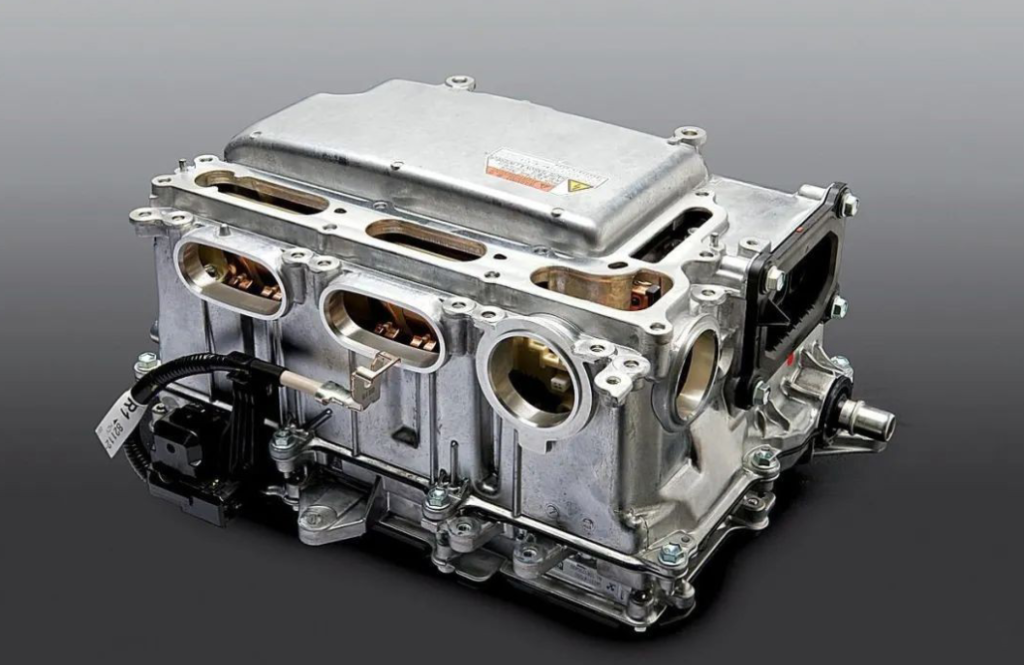
Later, the thyristor chopper speed regulation was widely used in electric vehicles, and the stepless speed regulation of the motor was realized by uniformly changing the terminal voltage of the motor and controlling the current of the motor.
In the continuous development of electronic power technology, it is also gradually replaced by other power transistors (such as GTO, MOSFET, BTR and IGBT etc.) chopper speed control devices. In the rotation conversion control of the driving motor, the DC motor relies on the contactor to change the current direction of the armature or the magnetic field to realize the rotation conversion of the motor, which makes the control circuit complex and reduces reliability.
When the AC asynchronous motor is used for driving, the change of the motor direction only needs to transform the phase sequence of the three-phase current of the magnetic field, which can simplify the control circuit.
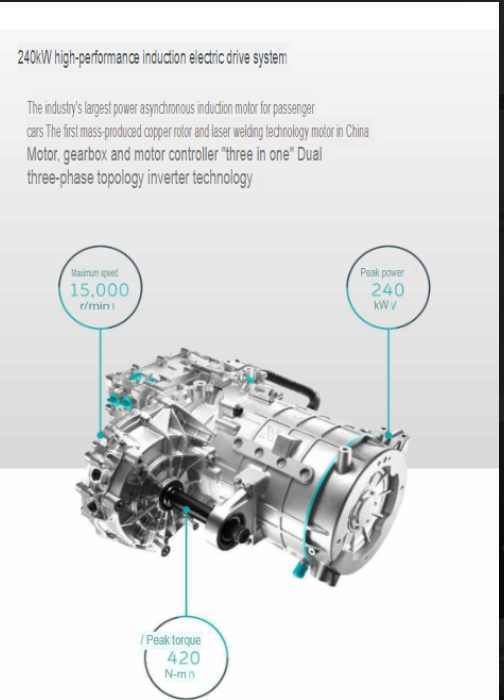
In addition, the use of an AC motor and its variable frequency speed control technology makes the braking energy recovery control of the electric vehicle more convenient and the control circuit simpler.
2.4 Transmission
The function of the electric vehicle transmission is to transmit the driving torque of the motor to the drive shaft of the vehicle. When electric wheel drive is used, most parts of the transmission can often be omitted.
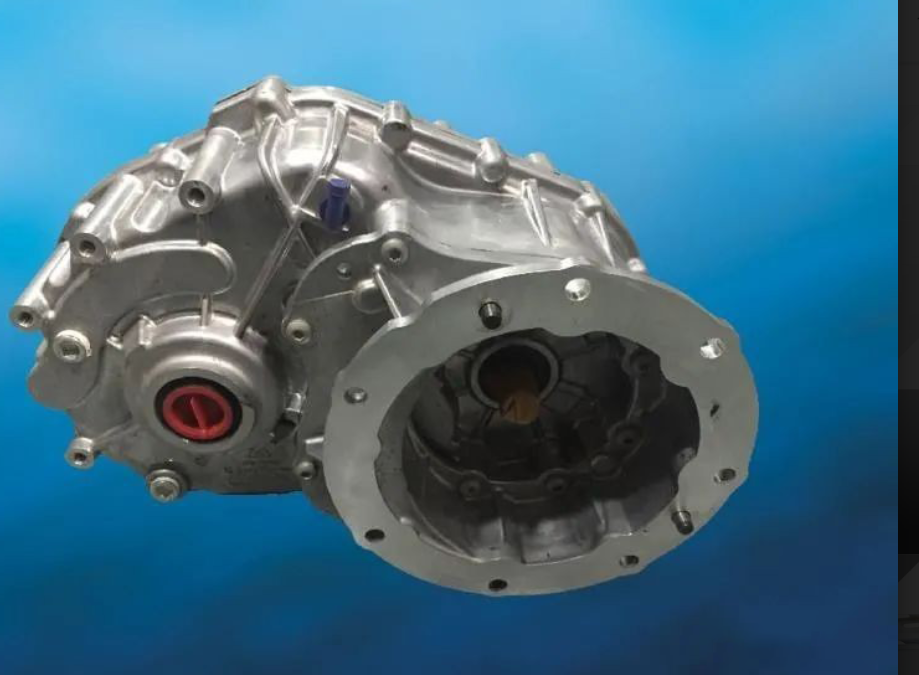
Electric vehicle gearbox (BorgWarner)
Because the electric motor can be started with load, the clutch of a conventional internal combustion engine vehicle is not required on an electric vehicle. Because the direction of rotation of the drive motor can be changed by circuit control, electric vehicles do not require reverse gears in internal combustion engine vehicle transmissions. When using the stepless speed control of the electric motor, the electric vehicle can ignore the transmission of the traditional car. When using electric wheel drive, electric vehicles can also omit the differential in the drivetrain of a conventional internal combustion engine vehicle.
2.5 Travel Gear
The function of the traveling device is to turn the driving torque of the motor into a force on the ground through the wheels, and drive the wheels to walk. It has the same composition as other cars, consisting of wheels, tires and suspension.
2.6 Steering Device
The steering device is set up to realize the turning of the car, and is composed of a steering machine, a steering wheel, a steering mechanism and a steering wheel.
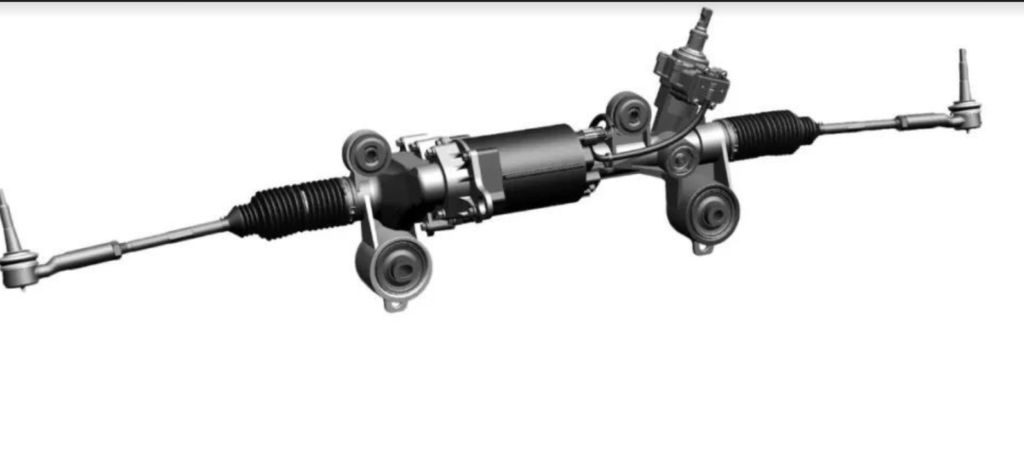
The control force acting on the steering wheel deflects the steering wheel by a certain angle through the steering gear and the steering mechanism to realize the steering of the car.
Passenger electric vehicles have front-wheel steering, and electric forklifts used in industry often use rear-wheel steering. The steering devices of electric vehicles include mechanical steering, hydraulic steering and hydraulic power steering, and electric steering systems.
2.7 Braking Device
The braking device of an electric vehicle, like other cars, is set up for the car to decelerate or stop, and it usually consists of a brake and its control device.
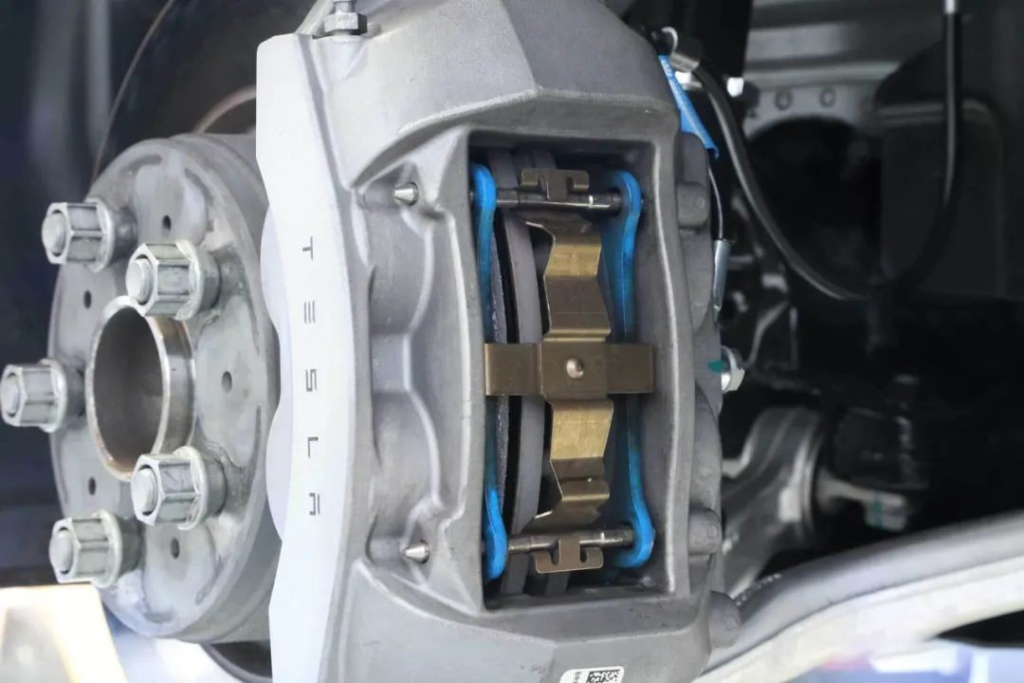
In electric vehicles, there is generally an electromagnetic braking device, which can use the control circuit of the driving motor to realize the power generation operation of the motor, so that the energy during deceleration braking can be converted into the current that charges the battery, so as to obtain regeneration.
3. The Key to the Development of Electric Vehicles
Batteries are the primary key to the development of electric vehicles, and automotive power batteries are difficult to meet three requirements: “low-cost requirements”, “high-capacity requirements” and “high safety requirements”.
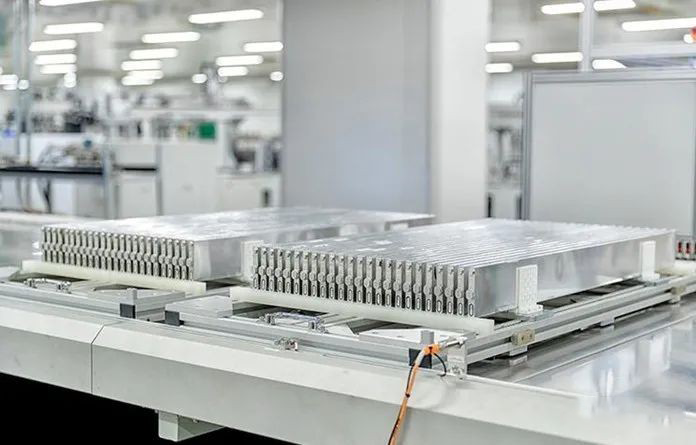
The storage energy per unit weight of nickel-hydrogen battery is twice that of lead-acid battery, and other properties are also better than lead-acid battery; iron battery uses iron material with abundant resources and low price, and the cost is greatly reduced; lithium is the lightest , A metal with very active chemical properties, lithium-ion battery energy storage per unit weight is 3 times that of lead-acid battery, lithium polymer battery is 4 times, and lithium resources are abundant, and the price is not very expensive. My country has achieved rapid development in the industrial development of nickel-metal hydride batteries and lithium-ion batteries.
Other related technologies of electric vehicles have made great progress in recent years, such as: AC induction motor and its control, rare earth permanent magnet brushless motor and its control, battery and vehicle energy management system, intelligent and fast charging technology, low-resistance tires, lightweight and low wind resistance body, braking energy recovery, etc., these technological advances make electric vehicles increasingly perfect and practical.
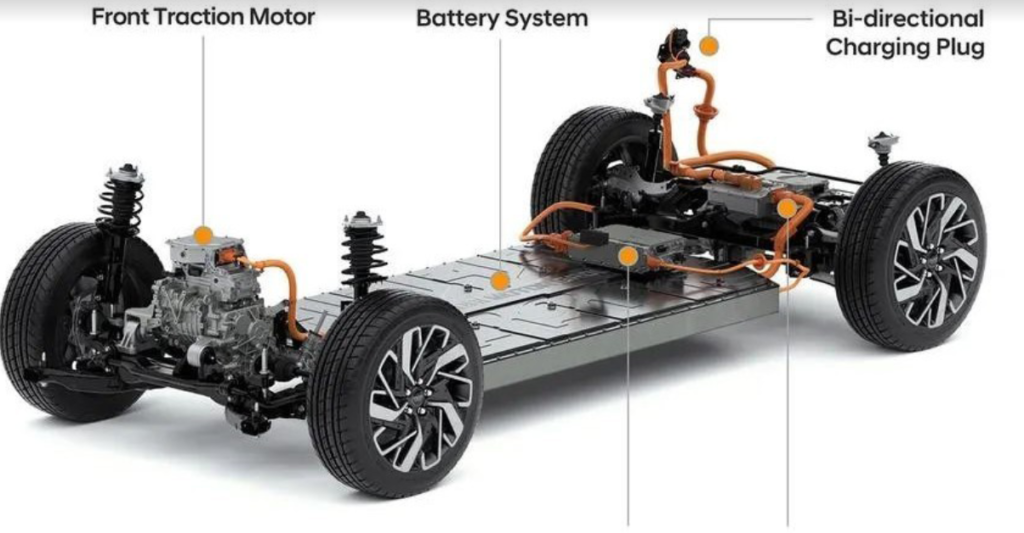
Air pollution in big cities in my country can no longer be ignored. Vehicle emissions are one of the main sources of pollution. 10 cities in my country have been listed among the 20 cities with the most serious air pollution in the world. My country’s current per capita car ownership has exceeded 17 cars per 100 people, but oil resources are insufficient, and more than 600 million tons of oil are imported every year. With the development of the economy, oil imports have become a big problem. Therefore, the research and development of electric vehicles in my country is not a temporary short- term measure, but a significant and long-term strategic consideration.
4. Structure and Characteristics of Electric Vehicles
The main difference (different) between pure electric vehicles and fuel vehicles lies in four major components: drive motor, controller, power battery, and on-board charger. Compared to gas stations, it can be charged with public ultra-fast charging stations.
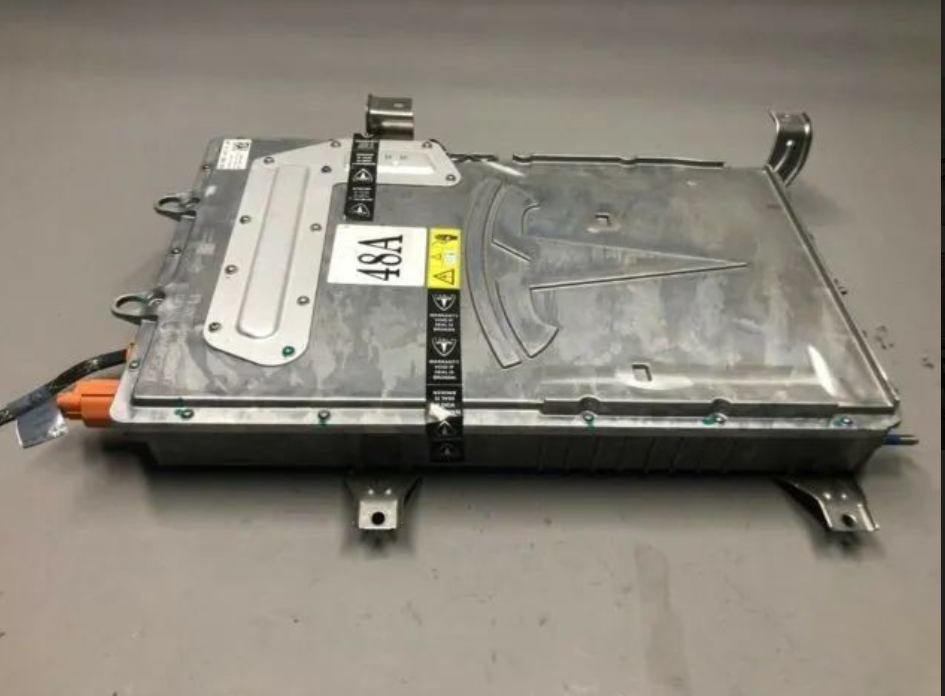
The quality difference of pure electric vehicles depends on these four components, and their value also depends on the quality of these four components. The use of pure electric vehicles is also directly related to the selection and configuration of the four components.
The speed and start-up speed of pure electric vehicles depend on the power and performance of the driving motor. The length of the continuation mileage depends on the capacity of the on-board power battery. The weight of the on-board power battery depends on the type of power battery used. Specific power, specific energy, and cycle life are all different. It depends on the manufacturer’s positioning and use of the vehicle grade and market definition.
BEVs that meet the needs of the international and domestic markets must comply with the following:
4.1 The R&D, manufacturing and operation of electric vehicles must comply with relevant national regulations. The performance of the whole vehicle and parts must meet the national technical standards and various specific requirements.
4.2 Electric vehicles use electricity as energy and are driven by electric motors, which will no longer generate new pollution, and will no longer produce hidden dangers of flammability and explosion.
4.3 The batteries used for energy storage in electric vehicles must be non-polluting and environmentally friendly. And has a durable life, with ultra-fast charging function. The vehicle determines the continuation mileage of a single charge according to the purpose, so as to install a battery pack with sufficient power, and make full use of the overcharge to extend the continuation mileage.
4.4 The drive motor should have high-efficiency energy conversion. The direct utilization and recovery of braking and deceleration energy strive for high efficiency of comprehensive energy utilization of vehicles.
4.5 Set the maximum speed according to the purpose of the vehicle and the driving occasion, and shall not exceed the limit value of traffic regulations, so as to reasonably select the power of the electric motor and configure the capacity of the battery pack.
4.6 The vehicle driving operation control is simple, effective and reliable, ensuring driving safety.
4.7 The mechanical and electrical devices are durable and less maintenance. The cost of vehicle operation is low.
4.8 Based on the needs of the target market, provide practical and suitable models to meet them, and strive to achieve a comprehensive unity of technology, economy, practicality and function.
5A. Brief History of Electric Vehicles
As early as 1873 in the second half of the 19th century, the British Robert Davidson (Robert Davidson) produced the world’s first practical electric car. This was more than 10 years before the invention of the gasoline engine car by the Germans Gottlieb Daimler and Karl Benz.

The electric vehicle invented by Davidson is a truck with a length of 4800mm and a width of 1800mm. It uses a primary battery that reacts with iron, zinc, amalgam and sulfuric acid. Since then, from 1880, secondary batteries that can be charged and discharged have been used. The development from a primary electronic meter pool to a secondary battery was a major technological change for electric vehicles at that time, and the demand for electric vehicles has greatly increased.
In the second half of the 19th century, it became an important product of transportation and wrote a brilliant page in the history of human transportation. In 1890, electric buses were driving on the streets of France and London. At that time, the technology of internal combustion engines for vehicles was still quite backward, with short mileage, many failures, and difficult maintenance, while electric vehicles were easy to maintain.
In Europe and the United States, the heyday of electric vehicles was at the end of the 19th century. In 1899, Frenchman Comen Gina drove a rear-wheel-drive electric car powered by a 44kW dual electric motor and set a record of 106km/h.
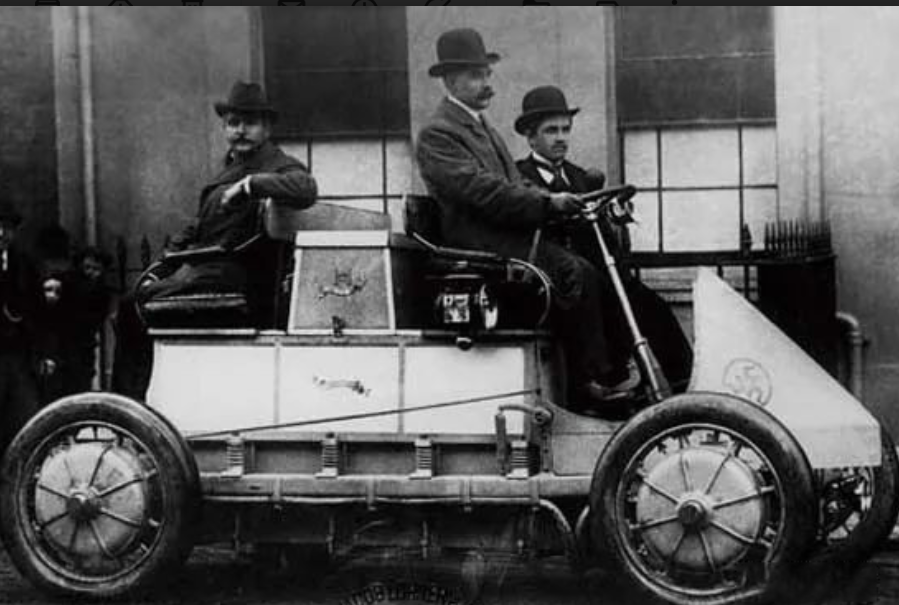
In 1900, there were 15,755 electric cars, 1,684 steam-engine cars, and only 936 gasoline- engine cars. After entering the 20th century, due to the continuous progress of internal combustion engine technology, in 1908, the Ford Motor Company in the United States introduced the T-type car. The mass production of automobiles in the assembly line method made gasoline engine automobiles popular, resulting in the existence of steam engine automobiles and electric automobiles in the market competition. Due to the lack of technical and economic performance, the former was eliminated by the ruthless years, and the latter was in a state of shrinkage.
Conclusion
The progress that the electric vehicle industry has seen in recent years is not only extremely welcomed, but highly necessary in light of the increasing global greenhouse gas levels. Technology is continuously advancing, which has allowed for electric vehicle usage to become more and more feasible to travel far distances. Additionally, the realization and success of this industry relies heavily on the global population and environmental education programs people will feel incentivized and empowered to drive an electric-powered vehicle.

